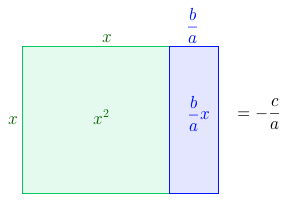As I wrote in my earlier post about solving quadratic equations, introducing the quadratic formula in solving for the roots of a quadratic equation is not advisable because it does not promote conceptual understanding. All the students learn in using the formula is to substitute the values and evaluate the resulting numerical expression. I have seen test questions like “In , what is the value of a, b and c?” Where is the mathematics in this item?
Not teaching the quadratic formula in solving for the roots of a quadratic equation does not mean that the quadratic formula will not be part of the algebra lesson. It would be a good exercise at the end of the unit to ask students to derive a formula for finding the roots of because you will be talking about vertex and discriminant (if you think they need to know what a discriminant is as this will just add to the terms they need to memorize) in later lessons. However I suggest that you ask the students ‘to solve for x’than ‘derive the formula’.
Problem
Solve the equation .
Solution
Express the left hand side as product: .
Complete the square:
The rest as they say is pure algebra:
As you can see, deriving the quadratic formula is a beauty. Using it is not. Completing the square and factoring will do for students solving quadratic equations for the first time (ninth grade, for most countries). What is needed at this point is exposure to different problem solving context requiring representations of and solving quadratic equations.
Coming up in the next post is the meaning of this in graphs.





